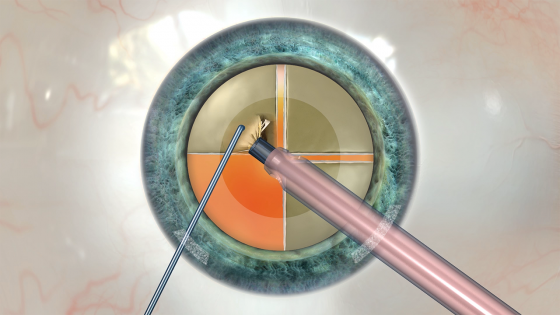Highlight advances in surgery and target your patient education
Today’s health care consumers have high expectations. Even older generations — not just millennials — are tech-savvy, engaged patients who are turning to the Internet and social media to research doctors and health concerns.
What does this mean for ophthalmologists who offer refractive surgery? It means that even the “cataract crowd” is savvy about new advances in health care, and is willing to shop around for top-rated doctors who offer what they want. If your patient education, patient engagement, technology, and techniques are not up to speed, you may risk losing cataract patients to other doctors. Here’s how to reach more patients.
1. Highlight the advances in cataract surgery.
If even an experienced surgeon is wowed by how far cataract surgery has come, you can be sure that prospective patients will be, too – and it’s your job to educate them. In the Toronto Sun, Dr. W. Gifford-Jones wrote about what he learned watching his wife’s cataract surgery.
“This was my introduction to what’s called Femtosecond Laser Cataract Surgery. It’s considered to be the most significant advance in cataract surgery in 50 years. Formerly, a hand-held instrument using ultrasound energy was used to break up the cataract, like a jackhammer breaking up cement. Now a computer-controlled laser, guided by an imaging device superior to an MRI, is used to divide the cataract into tiny fragments. This causes less turbulence in the eye with improved comfort and speedier healing.”
After learning more about laser cataract surgery through his wife, an experienced surgeon said he’d be more willing to prescribe the procedure to his own patients.
Dr. Gifford-Jones was impressed that the whole procedure took just 10-15 minutes, and decreased the former risks of this operation. He also wrote that he will now be more willing to prescribe cataract surgery to his own patients, and sooner.
An easy way to illustrate the benefits of laser cataract surgery is to show patients this video:
2. Stay on top of the latest techniques, like LAL.
Staying ahead of the curve is important to attract new patients and show that you’re aware of advances in your field. At the 2018 ASCRS Symposium, a light-adjustable lens (LAL) created a lot of buzz, reported the Ophthalmology Times.
Compared with a standard monofocal IOL or a toric IOL, the LAL is associated with a greater than two-fold improvement in the percentage of patients achieving UCVA of 20/20 or better. The data also show that more than 90 percent of eyes implanted with the LAL achieve a refractive outcome that is within 0.5 D of target, according to Fritz H. Hengerer, M.D., senior head physician/deputy director, Department of Ophthalmology, Heidelberg University, Germany.
While not yet commercially available in the U.S., a light-adjustable lens (LAL) is creating a lot of buzz for its “LASIK-like outcomes” for cataract patients.
“With the ability to provide LASIK-like outcomes, the LAL creates a new opportunity for cataract surgeons to grow the premium channel,” he said. The LAL has received FDA approval and the CE mark approval in Europe, but has not been launched commercially in the U.S.
Dr. Hengerer also noted that the LAL “is especially useful in people with a history of LASIK or other corneal refractive surgery [because] these patients also have high expectations for excellent outcomes.”
3. Be proactive in educating patients with diabetes.
Many patients may not be aware that people with diabetes are more likely than those without it to develop certain eye diseases, including diabetic retinopathy, glaucoma, and cataracts. In fact, diabetes doubles the risk of cataracts in the general population, with an even greater increased risk among people under the age of 70, according to the Ophthalmology Times.
Being proactive in your patient education efforts is a way to reach people who may not be aware they are at risk for cataracts, like patients with diabetes.
Proactive patient education is necessary to reach this segment of cataract sufferers. Even though cataracts are the most common cause of vision loss and the leading cause of blindness for people all over the world, misconceptions persist that the condition only affects older people. While one of the main risk factors is advanced age, diabetes, smoking, exposure to sunlight, and use of corticosteroids also increase cataract risk. Be sure that your patients understand this, and also emphasize the safety and efficacy of the corrective surgery.
In addition to being the most frequently performed operation in the U.S., cataract surgery “is one of the safest and most highly perfected surgical procedures in medicine, with a 95 percent success rate,” according to the American Academy of Ophthalmology (AAO).
First, make sure patients understand what cataracts are:
Then show them this video to give them an overview of the surgery:
See also, Five Cataract Myths to Clear Up for Your Patients
Since June is Cataract Awareness Month, it’s a great time to focus on educating and attracting more patients who could benefit from your practice’s offerings. To find out more about Rendia and sign up for a customized free trial, get in touch with us today!

